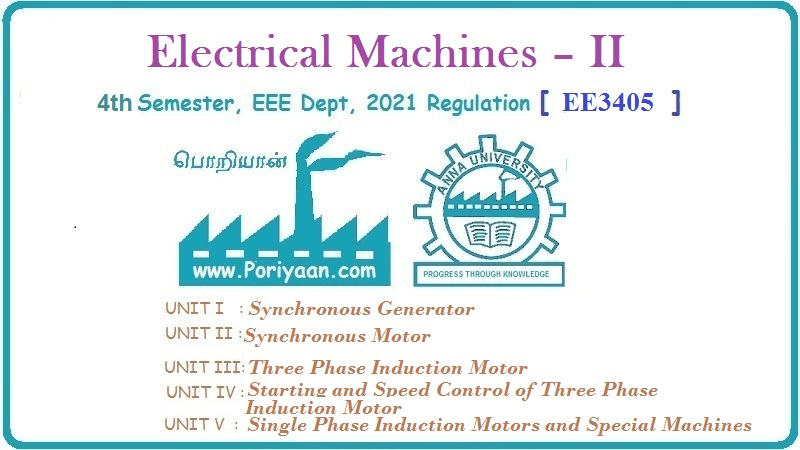Electrical Machines II: UNIT I: b. Armature Reaction and Regulation of Alternators
Introduction
Synchronous Generator or Alternators
This chapter explains the effect of the armature flux on the performance of an alternator and various analytical and graphical methods of finding the voltage regulation of an alternator.
Introduction
In
the last chapter we have seen how an e.m.f. gets induced in an alternator. As
long as the alternator terminals are open i.e. no load is connected to an
alternator, the induced e.m.f. is same as the voltage available at the
terminals. Thus terminal voltage per phase Vph and induced e.m.f.
per phase Eph are same as long as alternator is on no load.
But
when the alternator is loaded, the armature of an alternator carries current.
We know that, any current carrying conductor produces its own flux. Hence on
load, armature of an alternator produces its own flux called armature flux.
This flux has significant effect on the performance of an alternator on load.
The terminal voltage Vph no longer remains same as induced e.m.f. Eph
on load conditions. The performance of an alternator on load is mathematically
expressed by a parameter called voltage regulation.
This
chapter explains the effect of the armature flux on the performance of an
alternator and various analytical and graphical methods of finding the voltage
regulation of an alternator.
Parameters of Armature Winding
There
are three important parameters of an armature winding of an alternator. These
are,
1.
Armature resistance Ra
2.
Armature leakage reactance XL
3.
Reactance corresponding to armature reaction
Let
us discuss these three parameters in detail which will help us to draw an
equivalent circuit of an alternator. The equivalent circuit and the concept of
synchronous impedance plays an important role in determining the regulation of
an alternator.
Electrical Machines II: UNIT I: b. Armature Reaction and Regulation of Alternators : Tag: Engineering Electrical Machines - II : Synchronous Generator or Alternators - Introduction
Related Topics
Related Subjects
Electrical Machines II
EE3405 Machine 2 EM 2 4th Semester EEE Dept | 2021 Regulation | 4th Semester EEE Dept 2021 Regulation
